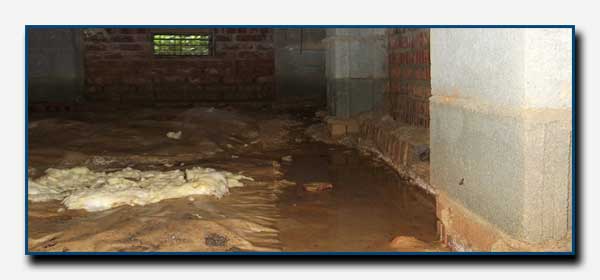WATERPROOFING YOUR CRAWLSPACE
Crawlspace moisture problems have been a challenge for homeowners for nearly one hundred years. Waterproofing the basement and moisture proofing the crawlspace utilize separate technologies to arrive at an acceptable problem resolution.
Moisture, mold, and fungus growth are issues that plague many homeowners in the Carolinas. It’s very common for older homes to lack proper ventilation systems. This poor air quality can lead to dangerous and costly damage to the structure of your building.In a quest for more energy efficient homes, builders are attempting to build homes tighter and because of that, crawlspace ventilation issues become more challenging. Today’s state of art homes and HVAC systems require an engineered solution to fully control moisture in the crawlspace without creating additional issues.
[callout style=”yogigreen” font_size=”13px”]
CRAWLSPACE QUESTIONS?
If you have foundation problems, basement/ crawlspace waterproofing needs or crawlspace air quality issues. Call Michael at … (704) 787-6972
Proudly serving Charlotte, Concord, Mooresville, Belmont, Pineville, Gastonia, Indian Trail, Weddington and Waxhaw in North Carolina as well as Fort Mill, South Carolina area.
[/callout]
5 STEPS – SOLVE YOUR CRAWLSPACE MOISTURE PROBLEM
STEP 1: Reduce water getting into the crawlspace
[rev_slider crawlspacewaterproof]
Water needs to be routed away from the foundation.
– gutters should be kept clean and in good working order
– downspouts need to drain away from the foundation.
– the ground should be pitched away from house as much as possible.
– there should not be any water standing in the crawlspace after a rainfall.
If there is, the crawlspace may need a sump pump or an interior drain system.
Often standing water inside the crawlspace can be solved by proper maintenance and planning outside of the home.
STEP 2: Cover the ground with a vapor barrier
[rev_slider vaporbarrier]
Moisture in the crawlspace must be contained.
– there are various opinions on how much coverage and what type of plastic should go into a crawlspace.
– the vapor barrier plastic, usually 6-10 mil polythylene, covers 100% of the crawlspace floor.
– the vapor barrier extends up the crawlspace walls, the height of which varies depending upon crawlspace conditions. The vapor barrier may extend up to home’s sill plate.
– the vapor barrier must be sealed to the foundation to contain the moisture.

